There it goes follks.
Nestled in a dense forest, the Ukrainian military base appears abandoned and destroyed, its command center a burned-out husk, a casualty of a Russian missile barrage early in the war.
But that is above ground.
Not far away, a discreet passageway descends to a subterranean bunker where teams of Ukrainian soldiers track Russian spy satellites and eavesdrop on conversations between Russian commanders. On one screen, a red line followed the route of an explosive drone threading through Russian air defenses from a point in central Ukraine to a target in the Russian city of Rostov.
The underground bunker, built to replace the destroyed command center in the months after Russia’s invasion, is a secret nerve center of Ukraine’s military.
There is also one more secret: The base is almost fully financed, and partly equipped, by the C.I.A.
“One hundred and ten percent,” Gen. Serhii Dvoretskiy, a top intelligence commander, said in an interview at the base.
Now entering the third year of a war that has claimed hundreds of thousands of lives, the intelligence partnership between Washington and Kyiv is a linchpin of Ukraine’s ability to defend itself. The C.I.A. and other American intelligence agencies provide intelligence for targeted missile strikes, track Russian troop movements and help support spy networks.
But the partnership is no wartime creation, nor is Ukraine the only beneficiary.
It took root a decade ago, coming together in fits and starts under three very different U.S. presidents, pushed forward by key individuals who often took daring risks. It has transformed Ukraine, whose intelligence agencies were long seen as thoroughly compromised by Russia, into one of Washington’s most important intelligence partners against the Kremlin today.The listening post in the Ukrainian forest is part of a C.I.A.-supported network of spy bases constructed in the past eight years that includes 12 secret locations along the Russian border. Before the war, the Ukrainians proved themselves to the Americans by collecting intercepts that helped prove Russia’s involvement in the 2014 downing of a commercial jetliner, Malaysia Airlines Flight 17. The Ukrainians also helped the Americans go after the Russian operatives who meddled in the 2016 U.S. presidential election.
Around 2016, the C.I.A. began training an elite Ukrainian commando force — known as Unit 2245 — which captured Russian drones and communications gear so that C.I.A. technicians could reverse-engineer them and crack Moscow’s encryption systems. (One officer in the unit was Kyrylo Budanov, now the general leading Ukraine’s military intelligence.)
And the C.I.A. also helped train a new generation of Ukrainian spies who operated inside Russia, across Europe, and in Cuba and other places where the Russians have a large presence.
The relationship is so ingrained that C.I.A. officers remained at a remote location in western Ukraine when the Biden administration evacuated U.S. personnel in the weeks before Russia invaded in February 2022. During the invasion, the officers relayed critical intelligence, including where Russia was planning strikes and which weapons systems they would use.
“Without them, there would have been no way for us to resist the Russians, or to beat them,” said Ivan Bakanov, who was then head of Ukraine’s domestic intelligence agency, the S.B.U.The details of this intelligence partnership, many of which are being disclosed by The New York Times for the first time, have been a closely guarded secret for a decade.
In more than 200 interviews, current and former officials in Ukraine, the United States and Europe described a partnership that nearly foundered from mutual distrust before it steadily expanded, turning Ukraine into an intelligence-gathering hub that intercepted more Russian communications than the C.I.A. station in Kyiv could initially handle. Many of the officials spoke on condition of anonymity to discuss intelligence and matters of sensitive diplomacy.
Now these intelligence networks are more important than ever, as Russia is on the offensive and Ukraine is more dependent on sabotage and long-range missile strikes that require spies far behind enemy lines. And they are increasingly at risk: If Republicans in Congress end military funding to Kyiv, the C.I.A. may have to scale back.
To try to reassure Ukrainian leaders, William J. Burns, the C.I.A. director, made a secret visit to Ukraine last Thursday, his 10th visit since the invasion.
From the outset, a shared adversary — President Vladimir V. Putin of Russia — brought the C.I.A. and its Ukrainian partners together. Obsessed with “losing” Ukraine to the West, Mr. Putin had regularly interfered in Ukraine’s political system, handpicking leaders he believed would keep Ukraine within Russia’s orbit, yet each time it backfired, driving protesters into the streets.
Mr. Putin has long blamed Western intelligence agencies for manipulating Kyiv and sowing anti-Russia sentiment in Ukraine.
Toward the end of 2021, according to a senior European official, Mr. Putin was weighing whether to launch his full-scale invasion when he met with the head of one of Russia’s main spy services, who told him that the C.I.A., together with Britain’s MI6, were controlling Ukraine and turning it into a beachhead for operations against Moscow.
But the Times investigation found that Mr. Putin and his advisers misread a critical dynamic. The C.I.A. didn’t push its way into Ukraine. U.S. officials were often reluctant to fully engage, fearing that Ukrainian officials could not be trusted, and worrying about provoking the Kremlin.Yet a tight circle of Ukrainian intelligence officials assiduously courted the C.I.A. and gradually made themselves vital to the Americans. In 2015, Gen. Valeriy Kondratiuk, then Ukraine’s head of military intelligence, arrived at a meeting with the C.I.A.’s deputy station chief and without warning handed over a stack of top-secret files.
That initial tranche contained secrets about the Russian Navy’s Northern Fleet, including detailed information about the latest Russian nuclear submarine designs. Before long, teams of C.I.A. officers were regularly leaving his office with backpacks full of documents.
“We understood that we needed to create the conditions of trust,” General Kondratiuk said.
As the partnership deepened after 2016, the Ukrainians became impatient with what they considered Washington’s undue caution, and began staging assassinations and other lethal operations, which violated the terms the White House thought the Ukrainians had agreed to. Infuriated, officials in Washington threatened to cut off support, but they never did.
“The relationships only got stronger and stronger because both sides saw value in it, and the U.S. Embassy in Kyiv — our station there, the operation out of Ukraine — became the best source of information, signals and everything else, on Russia,” said a former senior American official. “We couldn’t get enough of it.”
This is the untold story of how it all happened.
A Cautious Beginning The C.I.A.’s partnership in Ukraine can be traced back to two phone calls on the night of Feb. 24, 2014, eight years to the day before Russia’s full-scale invasion.
Millions of Ukrainians had just overrun the country’s pro-Kremlin government and the president, Viktor Yanukovych, and his spy chiefs had fled to Russia. In the tumult, a fragile pro-Western government quickly took power.
The government’s new spy chief, Valentyn Nalyvaichenko, arrived at the headquarters of the domestic intelligence agency and found a pile of smoldering documents in the courtyard. Inside, many of the computers had been wiped or were infected with Russian malware.
“It was empty. No lights. No leadership. Nobody was there,” Mr. Nalyvaichenko said in an interview.
He went to an office and called the C.I.A. station chief and the local head of MI6. It was near midnight but he summoned them to the building, asked for help in rebuilding the agency from the ground up, and proposed a three-way partnership. “That’s how it all started,” Mr. Nalyvaichenko said.The situation quickly became more dangerous. Mr. Putin seized Crimea. His agents fomented separatist rebellions that would become a war in the country’s east. Ukraine was on war footing, and Mr. Nalyvaichenko appealed to the C.I.A. for overhead imagery and other intelligence to help defend its territory.
With violence escalating, an unmarked U.S. government plane touched down at an airport in Kyiv carrying John O. Brennan, then the director of the C.I.A. He told Mr. Nalyvaichenko that the C.I.A. was interested in developing a relationship but only at a pace the agency was comfortable with, according to U.S. and Ukrainian officials.
To the C.I.A., the unknown question was how long Mr. Nalyvaichenko and the pro-Western government would be around. The C.I.A. had been burned before in Ukraine.
Following the breakup of the Soviet Union in 1991, Ukraine gained independence and then veered between competing political forces: those that wanted to remain close to Moscow and those that wanted to align with the West. During a previous stint as spy chief, Mr. Nalyvaichenko started a similar partnership with the C.I.A., which dissolved when the country swung back toward Russia.
Now Mr. Brennan explained that to unlock C.I.A. assistance the Ukrainians had to prove that they could provide intelligence of value to the Americans. They also needed to purge Russian spies; the domestic spy agency, the S.B.U., was riddled with them. (Case in point: The Russians quickly learned about Mr. Brennan’s supposedly secret visit. The Kremlin’s propaganda outlets published a photoshopped image of the C.I.A. director wearing a clown wig and makeup.)
Mr. Brennan returned to Washington, where advisers to President Barack Obama were deeply concerned about provoking Moscow. The White House crafted secret rules that infuriated the Ukrainians and that some inside
For more than a decade, the United States has nurtured a secret intelligence partnership with Ukraine that is now critical for both countries in countering Russia.

TL;DR: CIA maintains 12 secret bases near the border with Russia since 2014, Gladio 2.0 anyone?
Trump is not even close to Reagan and Bush, what the fuck are they talking about.
A prominent critic of President Vladimir Putin, Navalny, 47, spent his final months behind bars as the Russian leader reshaped the country to rally behind his war in Ukraine.
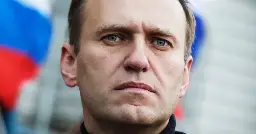
Oh shit they've got him.
Comrades, Welcome to the desert of the real. This year, I will endeavour to publish twice a week; politics midweek, culture or bonus obscenities on the weekend. For the time being, my writing on here will be entirely free. If you have the means, and believe in paying for good writing, please conside...
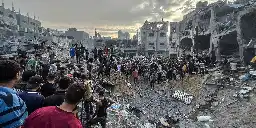
"So in my view the only correct position is: armed resistance to Russia in Ukraine, but peace and negotiations in the Gaza war. Why? Is this stance not inconsistent?" Yes.
Cyberpunk 2077 is fine, especially after 2.0 patch, combat is great, different builds can give you a lot of fun. But when it comes to storytelling it misses the point entirely. V has a pretty good life, the horrors of dystopia doesn't really apply to him. Of cours Jackie, the Relic etc, are a huge problem for him, but in this world you're a cybernetic demi-god, have all the money, cars, apartments, there are no downsides.
An exit poll says the far-right and anti-Islam populist Geert Wilders is heading for a massive parliamentary election victory. It's one of the biggest political upsets in Dutch politics since World War II and one that is bound to send shockwaves through Europe.
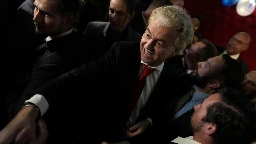
Oh what the hell is going on over there
IBM said Thursday it was suspending advertising after its ads appeared near pro-Nazi posts.
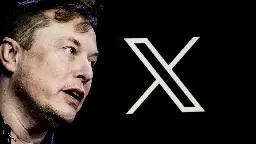
Lol it's getting better and better.
Bankman-Fried doubled down until the end.
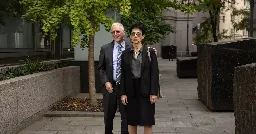
Omg what is this article.
I liked Tom Segura before he started to make fun of poor and homeless people.
Piketty's Capital in XXI century.
Is there something more cyberpunk than being a cop? What a pile of dogshit.
Omg Anne Applebaum is such a lib. Her books are dogshit.
Profiling is especially harmful. It's like the FBI knew that vast majority of serial killers where born in disfunctional families and neighbourhoods, but instead improving the material conditions of these families, especially with healthcare, they invented this bullshit pop culture version of serial killers, where the perpetrator is the master of deceit, literally the devil, and the profiler is the tortured soul that is trying to understnd the dark side of human psyche.
